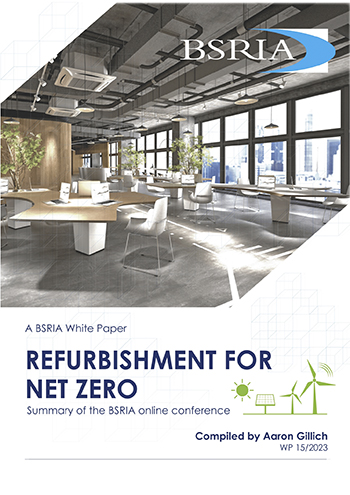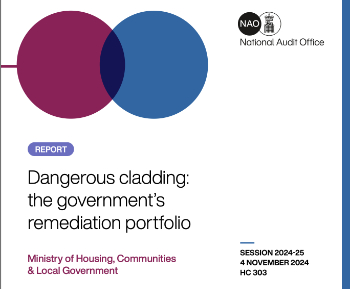Structural steelwork: a quality perspective
[edit] Introduction and executive summary
Steel’s low cost, strength, durability, and recyclability continue to make it a useful choice for construction projects in both structural support and architectural details.
Structural steel is defined as ‘manufactured structural components supplied individually or in kit form and intended to be used in any form, including temporary construction works (excluding marine and offshore). It is generally engineered specifically for the project therefore a competent structural engineer is the starting point for getting the right quality.
The British Construction Steelwork Association (BCSA) is the national organisation for the steel construction industry. Its member companies undertake the design, fabrication, finishing and erection of steelwork for all forms of construction in building and civil engineering. It provides guidance and many useful resources for design and construction quality management. The National Structural Steelwork Specification sets out a consistent approach for fabrication and erection of steelwork.
Mandatory CE Marking of fabricated structural steelwork came into force in July 2014 so all structural steel placed on the market after this date must be CE marked.
Companies authorised to CE mark their structural steel will be able to supply a certificate issued by the relevant national body stating the execution (risk) class they are authorised to work to.
In order to gain this certificate they will have been inspected and certified as complying with the harmonised standard BS EN 1090-1 which is supported by the execution (fabrication and erection) standard BS EN1090-2 and are required to make a declaration of performance which can be supported by objective evidence.
As this is a legal requirement it is important that the construction quality manager understands the process.
[edit] Guidance for construction quality management professionals
Steel’s low cost, strength, durability, and recyclability continue to make it a useful choice for structural members and architectural details. It is generally engineered specifically for each project. Typically, it will be encountered in building frames, staircases, balustrades, barriers and even temporary works structures.
The National Structural Steelwork Specification (NSSS), currently in its 5th (CE) edition, sets out a consistent approach to giving the fabricator the right information. Typically this would include:
- Description and purpose of the structure;
- Details of the construction site;
- Design drawings;
- Design specification and standards;
- Loading data;
- Any special fabrication or finishing requirements, and
- An outline method of erection.
[edit] Timely and accurate exchange of information is very important.
The construction schedule should allow for a review of the computer model and calculations. Typically, the engineer is responsible for structural analysis, overall stability and design of the primary structural members; and the steelwork contractor is responsible for connection design, secondary steelwork, co-ordination with other suppliers such as cladding, fire protection and painting. However, this can vary, the guidance is to ensure that accountabilities are clear.
[edit] Prepare a written method statement in accordance with the Construction (Design and Management) (CDM) Regulations.
This should take account of the information provided by the employer on design, erection and programme. Note: temporary works also require close supervision and control.
[edit] Provide a firm, properly graded, working area and ensure adequate access roads.
The employer should also inform the steelwork contractor of the position of any underground services.
The fabricator should ensure material grade and quality are identifiable within the manufacturing process. For example, when steel sections and plate are cut, individual pieces should be controlled so that the correct material is always used. Forming, cutting and joining process can impact the properties of the steel and should be closely controlled by authorised, competent people.
[edit] The management of welding should meet the quality requirements of BS EN ISO 3834-3.
Testing of welders and welding operators should be witnessed and the certificates then endorsed by a competent examiner. Welding procedures should also be verified and approved by a competent examiner. Technicians carrying out non-destructive testing of welds should hold a current certificate of competence from a nationally recognised body.
BS EN ISO 14731 sets out welding coordination - tasks and responsibilities. The responsible welding co-ordinator has wide-ranging duties, including review of material types and weld-joint properties, production planning, developing work instructions and welding procedures as well as inspection and testing for quality control.
Example of a quality assurance checklist for welded connections:
- Designer competence
- General arrangement drawings have references to connection design calculations
- Drawings show requirements for connections
- Welding co-ordinator assigned and competent
- Welding documentation:
- Material and consumable certificates
- Welding procedure qualification records
- Welding procedure specifications / work instructions
- Welder qualification certificates
- Welding inspector competence
- Visual inspection records
- Non-destructive testing practitioner competence
- NDT records and testing equipment calibration certificates.
Further information on welding assurance can be found in the article 'The Importance of Welding Assurance'.
Accuracy of fabrication, and joint fit-up for connections, should be closely supervised and controlled.
Prepare a detailed method statement for protective treatment applications and ensure that items are stored, transported and erected so as to minimise damage. Intumescent coatings require particular focus so that they perform as intended, when needed.
[edit] Example of a quality assurance checklist for protective treatments:
- Designer, applicator and coating inspector competence;
- Approved drawings and specification received;
- Specified products stored correctly;
- Steel surface cleaned and prepared to standard;
- Environmental conditions (relative humidity and steel and temperature);
- Wet- and dry-film thickness measurements;
- Over coating and curing times;
- Adhesion checks;
- Aesthetic quality of finish, and
- Protection
Samples and benchmarks make quality standards visible and demonstrate that they are achievable. Agree a schedule of samples and benchmarks and ensure that all interested parties are involved at the right time to optimise the likelihood of a successful outcome for all stakeholders.
When work is complete a certificate should be issued confirming that the steelwork has been erected in fully accordance with the drawings and contract requirements.
Important characteristics typically include:
- Tolerance on dimensions and shape;
- Fracture toughness;
- Load bearing capacity;
- Fatigue strength;
- Resistance to fire, and
- Durability and maintainability.
[edit] CE marking
Products used in construction must have CE marking. There are four key stages identified in BS EN 1090:
- Determine consequence class, eg an agricultural building with few users or a concert hall or grandstand packed with thousands of people;
- Define the service category, eg static, fatigue or seismic loads;
- Define the production category, eg is the steel grade higher or lower than S355;
- Define the execution class, this is derived from a table using the consequence class, service category and production category, typically EXC2
It is the responsibility of the structural engineer to define the execution class required.
The purchaser is responsible for selecting a fabricator who can meet or exceed the defined execution class required by the structural engineer.
Fabricators demonstrate their right to CE Mark their products using the following three documents:
- Factory Production Control Certificate - issued by a notified body;
- Welding Certificate - issued by a notified body;
- Declaration of Performance - issued by the steelwork contractor.
The BCSA has made CE Marking compliance a condition of membership of the Association from 1 July 2014.
[edit] Special appointments
The responsible welding co-ordinator (RWC) is an appointment mentioned in the NSSS. The RWC is appointed by the fabricator and is responsible for certifying the works to the purchaser/client. The purchaser/client may choose to formally accept or reject the RWC. If accepted the RWC becomes the authority for the quality of the steel work under his remit.
The bolting co-ordinator is a specialist appointment currently only applicable to bridges and highways. The BCSA defines competency and testing requirements for the bolting co-ordinator who is primarily responsible for ensuring all bolted connections are correct.
Further information sources
- SteelConstruction.info, the free encyclopaedia for UK steel construction information
- BCSA is the national organisation for the steel construction industry
- The Welding Institute
- The British Institute of Non Destructive Testing
- The Institute of Corrosion
- Fire Protection Association
[edit] Key reference documents
SteelConstruction.org Publication National Structural Steelwork Specification
SteelConstruction.org Publication Guide to the CE Marking of Structural Steelwork
Steel Industry Guidance Notes: SIGNS SN02 - Tolerances in Structural Steelwork (SteelConstruction.org)
Steel Industry Guidance Notes: SIGNS SN08 - Welding is a key fabrication process, yet little understood outside the workshop (SteelConstruction.org)
Steel Industry Guidance Notes: SIGNS SN19 - Intumescent Coatings (SteelConstruction.org)
BS EN ISO 3834 Quality requirements for fusion welding of metallic materials
BS EN ISO 14731 Welding coordination, tasks and responsibilities
BS EN 1090 Execution of steel structures and aluminium structures, requirements for conformity assessment of structural components
[edit] Jargon
CSWIP - Certification Scheme Weldment Inspection Personnel
PCN - Personnel Certification for Non-destructive Testing
WPS - Welding Procedure Specification
WPQR - Welding Procedure Qualification Record
RWC - Responsible Welding Co-ordinator
Original article written by Chris Little on behalf of the Chartered Quality Institute, Construction Special Interest Group, and accepted for publication by the Competency Working Group.
--ConSIG CWG 14:57, 05 Jan 2019 (BST)
[edit] Related articles on Designing Buildings Wiki
- Assurance and self-certification.
- Concrete vs. steel.
- Concrete-steel composite structures.
- Design freeze: a quality perspective.
- Installing fire protection to structural steelwork (GG 85).
- Passive and reactive fire protection to structural steel (IP 6 12).
- Procuring steel in major projects.
- Quality.
- Quality culture and behaviours.
- Rust.
- Steel.
- Steel construction floor vibration.
- Steel Council.
- Steel frame.
- Steel reinforcement.
- Structural steel.
- The use of stainless steel in civil engineering.
Featured articles and news
Refurbishment for net zero; the BSRIA white paper
The everyday practice of tackling energy efficiency, fabric first, ventilation, air quality, and occupant wellbeing.
Sustainable construction design teams survey
Shaping the Future of Sustainable Design: Your Voice Matters.
Ensuring the trustworthiness of AI systems
A key growth area, including impacts for construction.
Foundations for the Future: A new model for social housing
To create a social housing pipeline, that reduces the need for continuous government funding.
Mutual Investment Models or MIMs
PPP or PFI, enhanced for public interest by the Welsh Government.
Stress Awareness Week ends but employer legal duties continue.
A call to follow the five Rs for the business and for the staff.
Key points and relevance to construction of meeting, due to reconvene.
Cladding remediation programmes, transparency and target date.
National Audit Office issue report on cladding remediation.
HBPT and BEAMS Jubilees. Book review.
Does the first Labour budget deliver for the built environment?
What does the UK Budget mean for electrical contractors?
Mixed response as business pays, are there silver linings?
A brownfield housing boost for Liverpool
A 56 million investment from Homes England now approved.
Fostering a future-ready workforce through collaboration
Collaborative Futures: Competence, Capability and Capacity, published and available for download.
Considerate Constructors Scheme acquires Building A Safer Future
Acquisition defines a new era for safety in construction.
AT Awards evening 2024; the winners and finalists
Recognising professionals with outstanding achievements.
Reactions to the Autumn Budget announcement
And key elements of the quoted budget to rebuild Britain.























